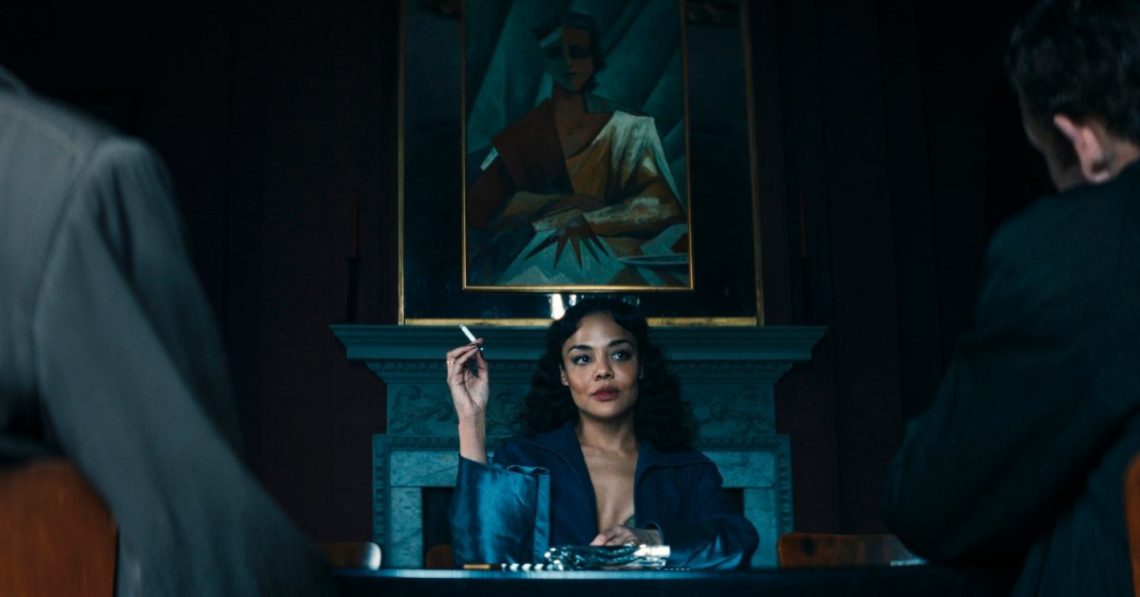Warning: This story contains spoilers for Hedda.
Why does Hedda Gabler marry George Tesman? She is spirited, beautiful, sophisticated, and the daughter of the late General Gabler, but she has chosen to marry the meek academic George Tesman, a man of lower class and of distinctively mediocre intellect. But the witless and untalented Tesman is the exact type of pushover that appeals to Hedda—he will be devoted to her, rarely challenge her, and allow her to reap the benefits of being a married woman of society without making her compromise her strong will.
It is the fact that she could do much better than him that makes her marriage so convenient, but in trying to secure a novel type of freedom for a woman in a traditional world, Hedda enacts deceptions and schemes that tragically prove that she is limited to the confines of a “proper,” conservative patriarchy—driving her ultimately to tragic, bitter ends. When we end our short stay with Hedda, large fragments of her character still feel illegible—despite her dextrous command of euphemism and startling candidness in a repressed society. Stage directors and performers have attempted to excavate and animate that ambiguity, first dreamed up by the Norwegian playwright Henrik Ibsen in Hedda Gabler, for over a century.
Ibsen, who has been dubbed “the father of modern drama,” wrote strong female characters that have appealed to artists since they were first written in the 19th century. Though it would come to be arguably Ibsen’s most beloved work, the psychologically challenging Hedda Gabler was not universally adored when first staged in 1891. The cinematic tradition of Ibsen adaptations is sparse, but the most recent attempt seeks to make up for lost time—starring Tessa Thompson, Hedda is a scandalous, transgressive, and restructured version of the classic play from director Nia DaCosta, sandwiched in between her franchise projects for Marvel and 28 Years Later.
Here’s how DaCosta’s film updates and complicates its already complex, legendary central figure.
A similar set-up from page to screen
The action in the film, which begins streaming on Prime Video Oct. 29, has been moved from Kristiania (now known as Oslo) to 1950s England, where Hedda (Thompson) has moved into an impressive estate with her cash-strapped, nebbish husband George (Tom Bateman)—a purchase that was secured and funded by Judge Brack (Nicholas Pinnock), a close friend of Hedda’s late father and a domineering male presence in Hedda’s life. Ibsen’s choice to use Hedda’s maiden name for the play speaks to her resistance to the strong presence of men in her life; DaCosta’s choice to remove the surname entirely speaks to a rejection of patriarchal identity, replaced with an ambiguous void that Hedda herself doesn’t know how to fill.
The couple has returned from a lengthy (and costly) honeymoon and are preparing to host a grand party, but Hedda is distracted by the news that controversial sociologist and writer Eileen Lovborg (Nina Hoss) will be in attendance. Reemerging from a career-destroying bout of alcoholism with a successful but slight new publication and a commitment to sobriety, Lovborg becomes the locus of Hedda’s tumultuous story: Lovborg’s queerness is an open secret, but less known is a former fling with Hedda.
George had been a shoo-in for a professorship that both he and Hedda need to support their high-society lifestyle, but with Lovborg on the straight-and-narrow, his placement is much less certain. Hedda’s former classmate Thea Clifton (Imogen Poots) gatecrashes the Tesman party ahead of Eileen, arriving with news of a groundbreaking opus co-authored by her and Lovborg and awaiting publication, confiding in Hedda her private fears that Lovborg will jeopardize her comeback by falling spectacularly off the wagon—a vulnerability Hedda is more than willing to exploit.
Gender-flipped characters and a new setting
Hedda’s Eileen Lovborg is the result of gender-swapping Ibsen’s characters; the play’s Eilert Lovborg is a rougher, sharper, and more masculine mirror to George Tesman, and despite their flirtatious chemistry, Ibsen does not confirm whether Eilert and Hedda previously had an affair. In the play, Thea Elvsted is a timid, naive woman who frets about favoring Lovborg over her neglectful husband; the antagonism and resentment Hedda feels toward Thea is given new dimensions in Hedda now that they form a charged queer love triangle with Lovborg. Poots’ Thea is still nervous, but now much sharper and more suspicious. Hedda’s Lovborg cannot be considered a replacement husband in the same way that Eilert could be for Mrs. Elvsted—Thea and Eilert’s love is far more private, but also self-defined. It’s this non-conforming independence that threatens Hedda, who has sidelined her queerness in making the decision to conform by marrying a meager man.
Hedda’s plot to sabotage Lovborg’s return takes on a new complexity in the film in DaCosta’s decision to make the writer an ex-lover—she is not only trying to secure her future by guaranteeing her unremarkable husband a good job, but she’s also jealously defending her traditional method of securing agency compared to any alternative paths—like, for instance, embracing her queerness and creating something beautiful with the woman she loves to share with the world (in the play, Lovborg’s new book is repeatedly referred to as his and Thea’s “lovechild”).
Many of the other character changes are a product of the film’s overhaul of Ibsen’s structure. Those who read the play after the film will be surprised to learn that Hedda and Tesman’s night-long party is an invention for the screen. Ibsen’s play takes place in George and Hedda’s front room over a two-day period, and the only nighttime debauchery happens offstage at one of Judge Brack’s bachelor parties, which spirals out of control when Lovborg gets into a fight at a brothel and loses his manuscript on the walk back to town.
By moving the action to ‘50s England, DaCosta affords her female characters some social freedoms, such as being seriously considered for professorships and getting drunk at a lavish and often horny party—there’s also the fact that DaCosta’s Hedda Gabler is Black and in an interracial marriage. Of course, high society is still full of gossips and chauvinists, and by adding about a hundred extra faces to Ibsen’s text, DaCosta hammers home how catty and hostile Hedda’s scene is—that she’s not the only manipulative and self-centered force in her world, but perhaps just a particularly driven and conniving agent.
An amped up finale with the same bitter aftertaste
Conniving is an apt word for what Hedda ultimately does with Lovborg’s manuscript, which Eileen loses after falling off the wagon. Here, DaCosta honors Ibsen; in both play and film, Hedda uses Thea’s devotion to Lovborg as a cudgel against Lovborg’s pride, pushing them to drink to prove they don’t need Thea’s protection. In Hedda, it’s a bit of a contrivance that Eileen Lovborg would bring her sole copy of her new, dazzling manuscript to a party—in Ibsen’s play, Lovborg makes a house call on the Tesmans in the afternoon and initially rejects the offer of going to Brack’s party.
In DaCosta’s film, Hedda’s scheme to stall Lovborg’s comeback is drawn out with more detailed scheming, including implicating Lovborg in a public humiliation of Professor Greenwood (Finbar Lynch), who is responsible for deciding the recipient of the professorship. But we also get more specific insight into Eileen and Thea’s thesis when Eileen drunkenly performs for a private gathering of leering male academics (that she purposefully shuts Thea out of, an indication of the type of gendered approval she craves most). Eileen talks about a burgeoning theory of fetishism, a controversial but enticing field that strengthens her appeal while also setting her up to be dismissed as a deviant when she loses her footing once again.
The two leading men remaining in DaCosta’s film, George Tesman and Judge Brack, are close to Ibsen’s versions, albeit with slight alterations. In the play, Tesman is described as portly and characterized as distinctly dim, and feels too soft to even foster real, passionate envy of Lovborg. Hedda’s Tesman is, thanks to the casting of Bateman, incredibly handsome and far more self-aware than the play’s version of his character, constantly tense and agitated by being overshadowed and overlooked, despite being as aware as anyone of his evident shortcomings.
After Hedda burns Lovborg’s manuscript and Lovborg is shot by a pistol accidentally going off in her own hand (a gun gifted to her by Hedda, one of General Gabler’s ornate firearms), Tesman and Thea team up to attempt to rewrite Lovborg’s manuscript by hand. In the film, this feels like a pointed exclusion of Hedda on Tesman’s part, but the effect is the same—Hedda is driven to the brink by assuming that another of her romantic partners is replacing her with a woman who she sees as lesser than herself. Thea’s love and Tesman’s respect for Lovborg (having more or less replaced his jealousy) hangs in the air, and despite Hedda’s best efforts, it feels like her late opponent has found another way to interrupt her prosperous new life.
This drives her into the waiting, insidious arms of Judge Brack, whose dialogue with Hedda is honored fairly faithfully throughout the film. An older, patriarchal figure, Brack has a kinship with Hedda that goes further than his erotically-charged patronage—she confides in him about her loveless marriage, how she pities her useless husband, and ultimately he is the only one who recognizes that Hedda gifted Lovborg the pistol that killed her. In the film, Brack’s attraction to Hedda, investment in her material future, and his familiarity with her father are all underlined, and by the end feel like a mounting pressure of desire and possessiveness directed at her. The stomach-turning climax of Ibsen’s play—where Brack blackmails Hedda by promising to keep her from scandal and criminal charges so long as, he implies, she submits to his sexual desires—is just as menacing in the hands of Thompson and Pinnock, even if it erupts into a more dramatic scuffle and chase compared to what transpires in Ibsen’s final pages. In Hedda Gabler, Hedda walks to a private chamber and shoots herself, while the final seconds of Hedda show its protagonist tear herself from Brack’s grasp, flee across the lawn, fill up her pockets with stones to descend beneath the surface of their pond.
It’s a cruelly cyclical note to finish on, as the film begins with Hedda emerging from the pond after a long, ambiguous moment spent completely under the water—perhaps DaCosta’s way of signaling the impulses already coursing inside Ibsen’s opaque heroine—to be first informed that Lovborg will in fact attend her party. It leaves the same aftertaste as Ibsen’s original text did in 1891; Hedda is a woman with a rare and potent type of agency, but her choice to embolden herself within the confines of a traditional patriarchy poisons rather than liberates her.
The post How Hedda Updates a 19th Century Masterpiece—Down to Its Explosive Finale appeared first on TIME.




